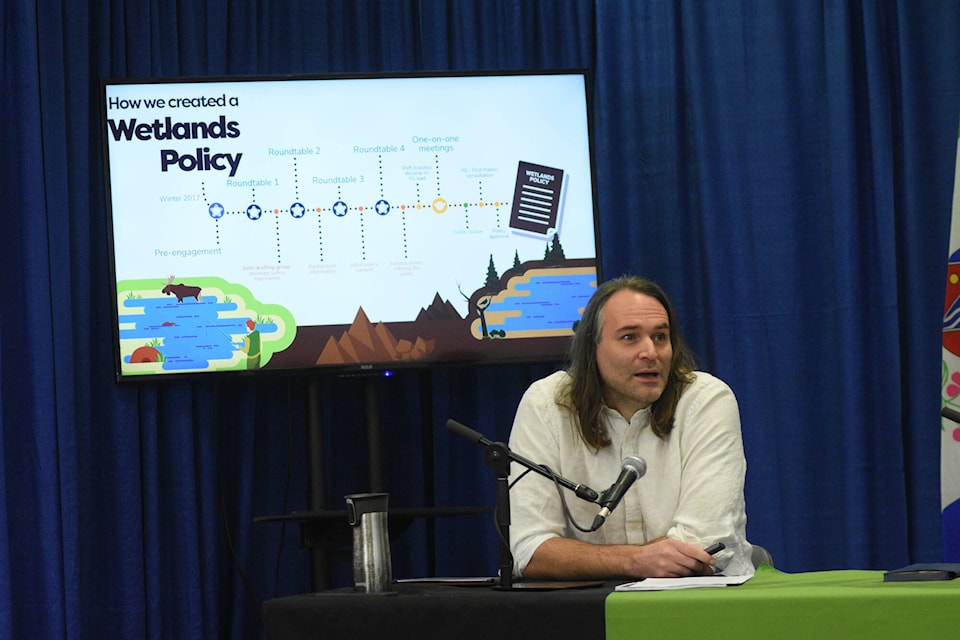The Yukon government is taking steps to define how the territory’s wetlands should be safeguarded with a new policy unveiled Jan. 10.
A policy for the stewardship of Yukon’s wetlands is the title of the 23-page document that sets out the government’s plans for building up knowledge about the territory’s wetlands, managing human impacts on them and identifying wetlands of special importance for added protection.
Yukon Environment Minister Nils Clarke, who was among those presenting the new policy, said the territory’s wetlands provide clean water and food while also mitigating flood risk, providing habitat for plants and animals and storing carbon that might otherwise wind up in the atmosphere.
He spoke about his recent trip to the COP15 biodiversity conference held in Montreal; one of the topics discussed was how the peatlands of the circumpolar north are now seen as a carbon store with a significance to the global climate similar to the great forests of the Amazon and Congo River basins.
Clarke described the new policy as a high-level guide that will steer protection of the wetlands for generations.
The wetlands policy has been under development since 2017. Clarke said roundtable meetings to inform the policy goals have been ongoing since then.
Minister of Energy, Mines and Resources John Streicker said the new policy will provide clarity on the rules for placer miners and others who plan to use or develop Yukon lands.
Tyler Kuhn, a senior habitat biologist with the government, noted the new policy is just one part of how wetland management in the Yukon works. He said the Yukon Environmental and Socio-economic Assessment Board, the Yukon Water Board, First Nations and other agencies are all involved with the protection of wetlands.
Kuhn said the policy applies to swamps and other features of the landscape that are easily identified as wetlands but also to forested wetlands which can be more difficult to locate. He added that a wetlands inventory identifying where the Yukon’s wetlands are is another important thing that needs to be completed. He said the policy commits the government to developing the territory-wide inventory over the next five years.
The “wetland of special importance” designation set out in the policy is a brand new tool for wetland protection. Kuhn said the wetlands that receive this designation will be managed in a way that ensures there is no impact on them from activities allowed in the area and no loss of the benefits the wetland provides.
One of the goals set out in the policy is support for wetland research. Kuhn said wetland mapping is one of the research projects that is going on and Yukon government’s mapping will soon sport new layers showing where wetlands in the Peel watershed and near Mayo are located.
“We’re hoping that, you know, by actually having this policy out, we can start to look for additional collaborative networks to move forward on things like wetland mapping,” Kuhn said.
”There is some some work underway, that’s really being led by Ducks Unlimited, to develop a field guide to wetlands.”
Contact Jim Elliot at jim.elliot@yukon-news.com
